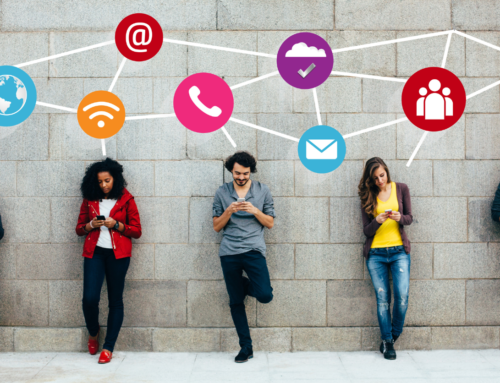Not long ago, from Monday to Friday, many consumers went to offices where they completed “work life” activities. Then they went home, where they immersed themselves in “personal life” activities. On weekends, they did chores and went shopping.
Advertisers could count on this behavior as the status quo—until the pandemic hit. Suddenly, many people began working from home. As the pandemic eased, hybrid work became the norm and life became blurred. For many, tasks that were previously done at the office began to be done at home. Even as societies reopen, this change has triggered a fundamental, and now possibly permanent, shift in how we spend time online and created the “Workday Consumer.”
Although the blending of work and personal lives has changed the consumer journey, many brands risk being caught on autopilot with their digital marketing.
A study by Forrester commissioned by Microsoft Advertising found that the Workday Consumer unapologetically switches among employee, personal, and consumer modes throughout the day, with 59% considering their work and personal tasks equally important during their work time.
Just over half (51%) of the survey respondents indicated that the number of online purchases they make during work time has increased since the start of the pandemic. Nearly two-thirds (62%) regularly research or purchase products and services during work time, which is even more than those who regularly browse social media. And 44% expect to increase their purchasing during work time in the next 12 months.1
The PC is a key touchpoint: 56% of Workday Consumers use their work tools for personal tasks. The categories that appear to be top of mind during work time are usually high-consideration purchases, including financial products, vacations, appliances, and luxury goods.
The research unearths the full extent of this shift in consumer behavior and what it means for employers and marketers that aren’t equipped to adjust to this new reality. Advertisers risk missing this crucial audience. This shift must prompt a reevaluation of their platforms, personas, and budget allocations, taking into consideration their business, brand, and acquisition goals.
“Digital marketing must operate at the intersection of work and life. No longer can marketers continue using demographic targeting the way it’s used today—they must now incorporate consumers’ mindsets into the advertising strategy,” John Cosley, senior director at Microsoft Advertising, says. “It’s a case of throwing out the playbook and no longer running on digital marketing autopilot. Your customers have moved on, but have you?”
The PC Boom
With 63% of consumers spending more time on their PCs than they did before the pandemic began, and completing more personal tasks on those PCs, this shift in consumer behavior gives a competitive advantage to advertisers that shift with them.
Since the pandemic began, the PC market has seen the most significant growth in a decade. Global PC shipments surpassed 340 million in 2021,2 with growth up 27% over 2019, Canalys reports.3 Microsoft Windows, the largest PC operating system by market share, powers over 1.4 billion active devices2 monthly, with time spent up 10% above pre-pandemic levels. Despite the rapid growth of mobile commerce, 56% of online retail sales are predicted to occur via PC in 2024.4
Meeting the Workday Consumers Where They Are
The more advertisers are empowered to understand customer mindset and behavior on their decision journey, the more likely they will reach them.
Savvy marketers know that consideration of new consumer mindsets and behaviors prompts better strategies, but many marketers have yet to seize this opportunity. Many brands still rely on traditional customer personas that use demographics and purchase histories but rarely consider more nuanced cues—and these brands struggle to convert customer data into actionable insight. In fact, 67% of respondents to the Forrester study rated their organizations as intermediates or novices at developing in-depth target personas, and 60% of brand decision makers indicated their organizations do not consider mindset when developing personas.
“Marketers must address this change in consumer behavior and adapt their approaches, or risk being left behind,” says Cosley. “They must redefine their target consumer personas to account for the new Workday Consumer mindset.”
To engage with the Workday Consumer, it’s more critical than ever for brands to communicate using a platform and tools that connect them with millions of monthly unique PC searchers who consume native advertising on brand-safe experiences.
The Workday Consumer is in a task-oriented mindset, has higher buying power, spends more time and money online, and is more likely to engage with ads to try new offers.5 That gives marketers a choice—continue on digital marketing autopilot or meet the audience they’ve been missing out on.
1 Base: 1,301 marketing and digital advertising decision makers at companies in North America, Europe, and APAC. Source: A commissioned study conducted by Forrester on behalf of Microsoft, November 2021.
2 “A new era of the PC,” Microsoft Windows blog, January 26, 2022.
3 “Global PC shipments pass 340 million in 2021, and 2022 is set to be even stronger,” Canalys, January 12, 2022.
4 “Forrester Analytics: Search Marketing Forecast, 2019 to 2024 (US),” Forrester, March 4, 2020.
5 Buying Power Index, comScore custom report, June 2021.
The original article: https://hbr.org/sponsored/2022/06/adapt-your-digital-marketing-strategy-to-post-pandemic-consumer-behaviors






